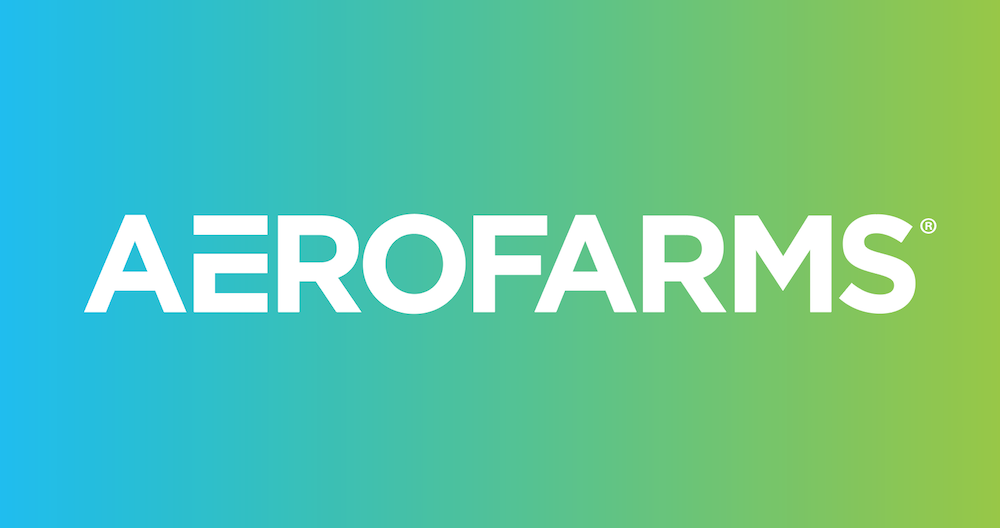Vertical farms are struggling | Uber and Waymo are partnering | EV charging depots are coming

Agtech's portfolio of vertical farming startups is facing an existential crisis.
Alarm bells were ringing earlier this year. But with two agtech startups filing for bankruptcy protection since April and potentially another headed for Chapter 11 soon the vertical farming industry itself may be on the ropes.
Promising a 90 percent reduction in water consumption, requiring no soils, and managed virtually by AI-powered software, high-tech hydroponic vertical farms were viewed as an elegant solution to deforestation and climate change-driven food insecurity.
But there were always skeptics, who pointed out the industry's inability to scale (given that most startups were only growing greens, not proteins, which still require acres of actual farmland) and massive capital requirements in order to turn relatively healthy gross margins into actual operating profit (much less produce enough food to feed entire cities as proponents suggested they could).
Now, facing rising interest rates and a shifting venture capital market, the industry is getting pinched. The latest victim is Newark, New Jersey-based AeroFarms, which as recently as 2021 sported a $1.2B valuation and had plans to go public through a SPAC. Now, it's filed for Chapter 11, and plans to move its operations to Danville in southern Virginia where it will focus on reducing costs and becoming profitable in a bid just to stay alive.
AeroFarms joins Kalera and AppHarvest as other high-profile vertical farming startups that have stumbled into this perfect storm of investor skepticism and macroeconomic headwinds during the first half of 2023:
“We really were in a hype cycle,” said Vonnie Estes, vice president of innovation for the International Fresh Produce Association. Venture capitalists entered the scene in a frenzy, likening these companies to software firms, and expecting comparable returns. “There was a lot of money that rushed in without really understanding that this is actually just farming.”
Vertical farming is not only capital- but energy- and labor-intensive, on top of being relatively small in scale compared to traditional agriculture, which it hasn't proved it can compete with yet. So while it's true, from a climate perspective, that the technology has benefits, whether it can work as a viable business is very much an open question.
Indeed, in 2022, vertical farming startups raised over $1B. But this year that figure has plummeted to less than $100M, throwing the very existence of the industry into question.
As Vaclav Smil (who can generously be described as a skeptic when it comes to our prospects for rapidly decarbonizing modern civilization) further points out:
Vertical farms can produce—profitably—hydroponically grown leafy greens, tomatoes, peppers, cucumbers, and herbs, all with far less water than conventional agriculture requires. But the produce contains merely a trace of carbohydrates and hardly any protein or fat. So they cannot feed cities, especially not megacities of more than 10 million people. For that we need vast areas of cropland planted with grains, legumes, and root, sugar, and oil crops, the produce of which is to be eaten directly or fed to animals that produce meat, milk, and eggs. The world now plants such crops in 16 million square kilometers—nearly the size of South America—and more than half of the human population now lives in cities.
It's likely that there will always be investors interested in vertical farming technologies, particularly those hailing from climate and food insecure regions of the world like the Middle East and China. And as wildfires, hurricanes, and other climate change-driven weather events make even historically stable growing regions more prone to natural disasters, perhaps there will increasingly be niche verticals for these companies to fill.
But as the last year has demonstrated, at a minimum they'll need to prove to investors that they have a path to profitability. Otherwise they'll meet the same unfortunate fate as AeroFarms - which isn't a great result for investors, the public, or the planet. (Bloomberg, NJBiz)


After battling in the public eye for years, Uber and Waymo have laid down their arms and announced a new, multi-year strategic partnership.
The new deal will make Waymo's autonomous vehicles available through the Uber platform starting in Phoenix, where Waymo's AV service (which it calls the Waymo Driver) will now be available across 180 square miles of the sprawling Sun Valley. And, in addition to ride-hailing, the Waymo Driver will also make Uber Eats deliveries as part of the partnership.
Waymo AVs currently provide around 10K trips/week to public customers and the company is aiming to increase that figure by next summer tenfold. After Phoenix and San Francisco the company is next plotting an expansion of its AV coverage into Los Angeles. Today the Waymo Driver remains the only 24/7 fully autonomous ride-hailing service in operation globally, although others are catching up.
But this particular Uber/Waymo partnership is noteworthy as a case of keeping your friends close and your enemies closer; the companies have a colorful but checkered past, littered with lawsuits, allegations of trade secret thefts, and a high-profile DOJ investigation into spoliation of evidence. Still, after a fledgling alliance with Lyft fizzled out in 2020, Waymo had also previously struck a deal with Uber in 2022 to apply its Waymo Via AV technology to the logistics industry and ultimately deploy autonomous trucks across Uber Freight's shipping marketplace:
The Waymo Via autonomous solution will be connected directly with the Uber Freight platform for shippers to tap into. This will begin with trucks in Waymo Via’s test fleet, and later on, carriers that purchase trucks equipped with the Waymo Driver through our Driver-as-a-Service model will be able to opt-in to Uber Freight and seamlessly deploy these assets on the network, enabling them to maximize utilization and grow their businesses.
Yet whether fully autonomous ride-hailing for all is realistic remains an open question. There have been some high-profile traffic jams and tragic accidents, along with general skepticism about AVs. And this summer, in what might be considered a bellwether for the future of the industry in urban locations (most of which are far denser than greater Phoenix), the California Public Utilities Commission will consider an application from Waymo and the GM-owned AV provider Cruise to expand robotaxi service operations in San Francisco.
We're still a long way from Johnny Cabs ubiquitous in urban cores. But the data that Waymo and Uber eventually collect from their increasing collaboration seems destined to inform their logistics initiative, which is likely more viable for AV applications in the near-term. (Tech Brew)

In California, 41 percent of greenhouse gas emissions come from automobiles, but they contribute less than 30 percent to the rest of America's emissions.
Of those California emissions 20 percent come from medium- or heavy-duty trucks (nationally that figure is 25 percent). So electrifying this segment is crucial not only for the Golden State's ambitions to reach its Climate Commitment legislation goal of net zero emissions by 2045 but for America's broader (albeit less well-defined) goals of fighting climate change.
And along the coasts and in the nation's port and rail hubs drayage trucks (these are vehicles that follow a fixed route taking cargo in and out of the hub - there are 30,000 of them in California alone) have a disproportionate impact on the sector's carbon emissions. So decarbonizing them is critical and an important place to start. In fact, earlier this year, California enacted a rule requiring any new drayage trucks entering service after January 1, 2024 to be zero-emission, and all drayage trucks that serve the state's ports or railyards to be zero emission by 2035.
But truck drivers and fleet operators (i.e. long-haul companies like Hunt or Werner) will face different challenges than private cars when it comes to charging their EVs - most of today's charging infrastructure can't accommodate big rigs. So what might the future of electrifying this sector look like? As always, you can find what's coming next in California.
Built by startup called Forum Mobility, the Greenville Community Charging Depot in Livermore will serve trucks accessing the Port of Oakland on adjacent I-580. The facility will ultimately fast-charge nearly 100 trucks at the same time. It's being built on four acres and will offer charging-as-a-service (CaaS?) to fleets, which can reserve spots to charge between shifts (usually during the overnight). It will also lease electric trucks (i.e. trucks-as-a-service, or TaaS?). Generally it takes between 3 and 10 hours to fully charge electric medium- and heavy-duty vehicles. The Forum depot could be a preview of what these types of "EV charging depots" for heavy-duty trucks could look like elsewhere.
According to Grist:
These providers [such as Forum] are a really important part of making the electric-truck cost of ownership superiority available to more truck operators . . . . They create an ability to own and operate electric trucks for fleets that might not have charging in their facility, and they also make trucks accessible to small fleets and individual operators who can’t take on the financing for the trucks themselves.
Still, the scale of what's needed is massive; there are only two other EV charging depots currently in operation in California (one opened at LAX in 2022 with 77 fast and 53 conventional chargers, and then a second earlier this year at the Port of Long Beach which can support 26 trucks). Forum is looking to build more charging depots over the next 18 months at 8 different sites in both northern and southern California that will be able to charge 600 trucks.
California is leaning heavily into EV charging. Last year, the California Energy Commission and CalTrans signed a deal with the Biden administration for $56M in IIJA funds to begin installing what will ultimately be a 6600-mile, 1.4M station EV charging network across the state. 150K of those stations will be dedicated to medium- and heavy-duty vehicles. But that figure doesn't include the "multi-fleet" charging depots like Forums.
Still, the state is set to receive $380M from IIJA for more EV charging infrastructure, on top of the $10B that Governor Newsom's 2022 budget previously set aside for EVs. But it's likely the state will need even more funding if it is to succeed in banning all new fossil fuel-powered vehicles by 2035 (as its Air Resources Board voted to do in August of 2022).
Regardless of how it's funded, building out EV charging depot capacity will be an interesting, knotty problem for startups to help solve. They need space, they need access to the right transportation corridors, their location needs to be zoned correctly, and they need power from a reliable grid connection. So the Forum depot could be an important blueprint for the sector moving forward. (Grist)






Member discussion